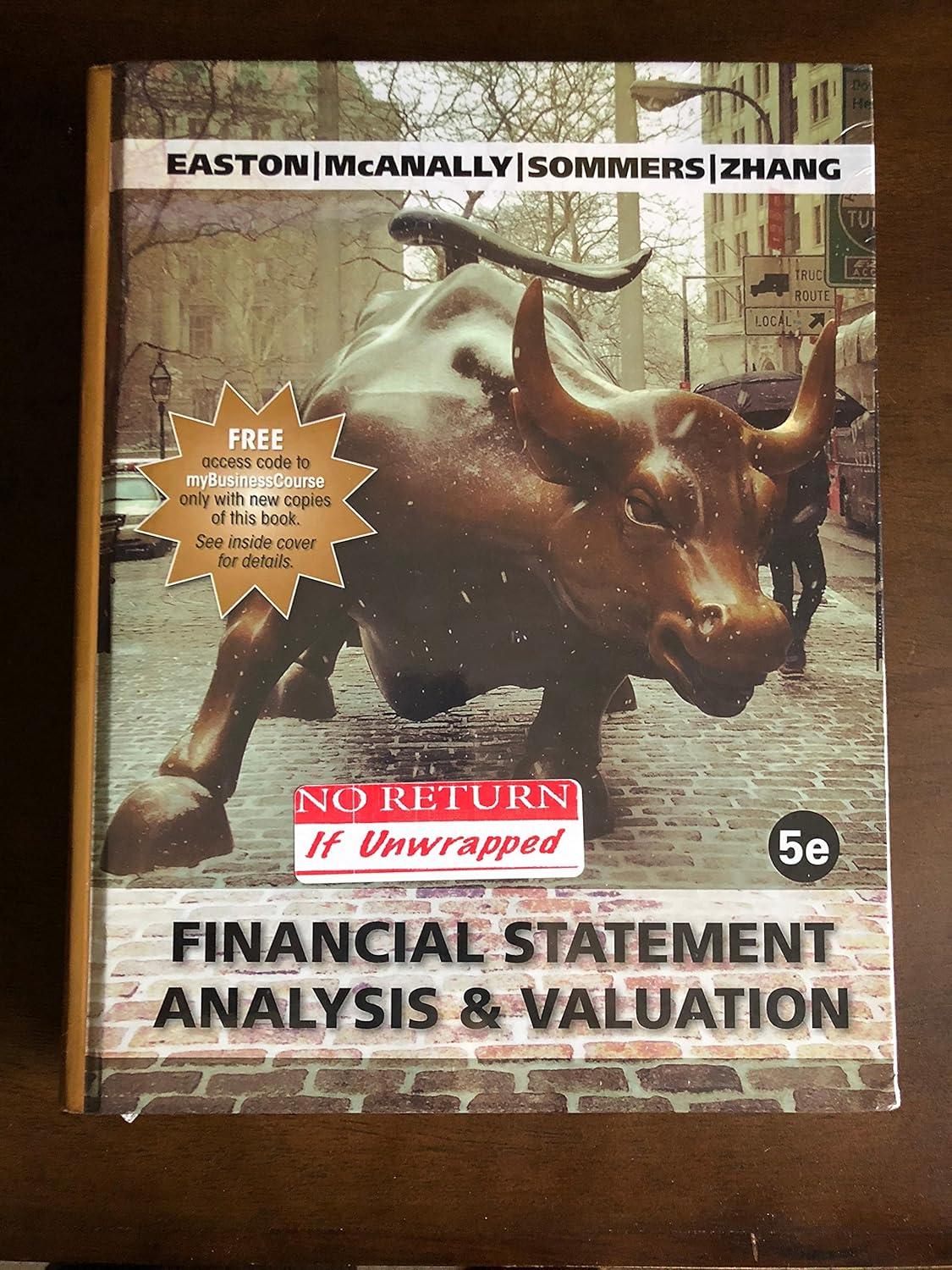Estimating Share Value Using the DCF Model Following are forecasts of Texas Roadhouses sales, net operating profit
Question:
Estimating Share Value Using the DCF Model Following are forecasts of Texas Roadhouse’s sales, net operating profit after tax (NOPAT), and net operating assets (NOA) as of December 29, 2015.
Required
a. Assume the following forecasts for TXRH’s sales, NOPAT, and NOA for 2016 through 2019. Forecast the terminal period values assuming a 1% terminal period growth rate for all three model inputs: Sales, NOPAT, and NOA.
$ thousands Reported 2015 Forecast Horizon 2016 2017 2018 2019 Sales. . . . . . . . . . . . $1,807,368 $2,060,400 $2,348,855 $2,513,275 $2,689,205 NOPAT . . . . . . . . . . 102,495 168,953 192,606 206,089 220,515 NOA . . . . . . . . . . . . 662,502 755,279 861,017 921,288 985,779
b. Estimate the value of a share of TXRH common stock using the discounted cash flow (DCF) model as of December 29, 2015; assume a discount rate (WACC) of 7%, common shares outstanding of 70,091 thousand, net nonoperating obligations (NNO) of $(14,680) thousand, and noncontrolling interest
(NCI) from the balance sheet of $7,520 thousand. Note that NNO is negative because the company’s cash exceeds its nonoperating liabilities.
c. TXRH closed at $42.13 on February 26, 2016, the date the Form 10-K was filed with the SEC. How does your valuation estimate compare with this closing price?
d. If WACC has been 7.5%, what would the valuation estimate have been? What about if WACC has been 6.5%?
Step by Step Answer:

Financial Statement Analysis And Valuation
ISBN: 9781618532336
5th Edition
Authors: Peter D. Easton, Mary Lea McAnally, Gregory A. Sommers






